#W. E. B. Du Bois
Explore tagged Tumblr posts
Text
"We should measure the prosperity of a nation not by the number of millionaires but by the absence of poverty, the prevalence of health, the efficiency of public schools, and the number of people who can and do read worthwhile books." W.E.B. Du Bois.
#quote of the day#quote of today#w. e. b. du bois#prosperity#wealth#nation#nation building#numbers#millionaires#health#healthcare#poverty#efficiency#schools#public schools#education#people#choices#decisions#possibilities#books#books and reading#books books books#agenda#politics#reading#what matters
297 notes
·
View notes
Text
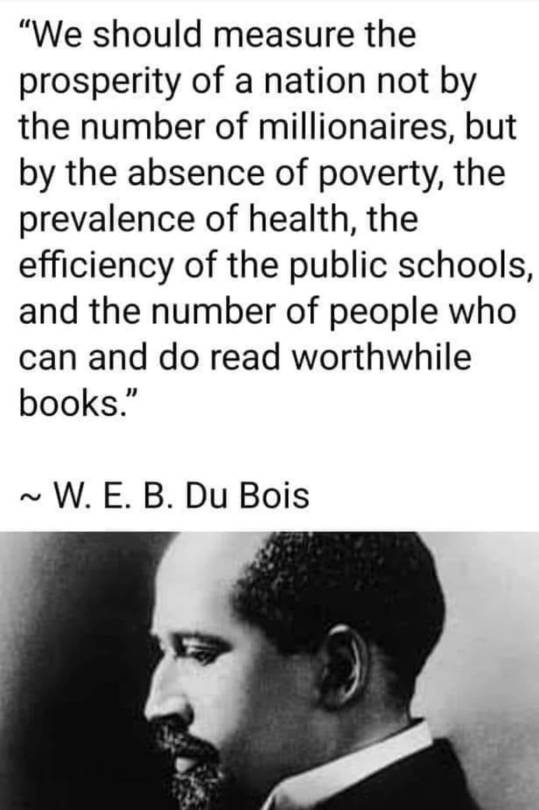
348 notes
·
View notes
Text

#photography#quote#black spirituality#black history#blm#w. e. b. du bois#quotations#books and reading#black boy joy#hoodoo#black girl magic#black boys#james baldwin#toni morrison#democracy
25 notes
·
View notes
Text
Just...
I find it strange that at 30+ I'm going through this black awareness/awakening but it's prolly due to being farther away from major influences on my life not providing a healthy dose of it throughout my life
I mean I'm educating myself as much as possible and I feel like I'm alienating myself from a lot of people, education breeds this contempt within myself a I feel neglectful and hateful that I was unaware through no real fault but still feel guilty that I didn't look into it more when I was younger but my mind was more occupied on the next time I could call a place a home or when our next move would be so I give myself a little forgiveness.
It's never too late to learn

#black awareness#black#negro#double consciousness#w. e. b. du bois#atlanta#colorism#dreads#dreadlocks#dread head#dread heads#dreadhead#dreadheads
7 notes
·
View notes
Text

One Party, Two Names
#One Party#Two Names#w. e. b. du bois#usa is a terrorist state#usa is funding genocide#usa#america#ausgov#politas#australia#book quotes#quotes#quoteoftheday#book quote#life quote#beautiful quote#quote#auspol#tasgov#taspol#fuck neoliberals#neoliberal capitalism#anthony albanese#albanese government#quotable
8 notes
·
View notes
Text
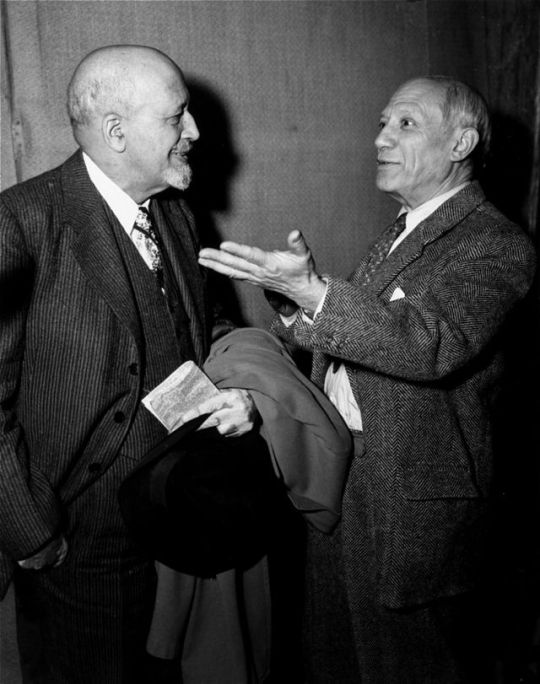
W. E. B. Du Bois, February 23, 1868 – August 27, 1963.
With Pablo Picasso in 1949.
25 notes
·
View notes
Text

when dubois said “This is not Europe gone mad; this is not aberration nor insanity; this is Europe; this seeming Terrible is the real soul of white culture.”
#our world#ecosystem of white supremacy#politics#w. e. b. du bois#israel is an apartheid state#our history is your history#this is Europe
14 notes
·
View notes
Text
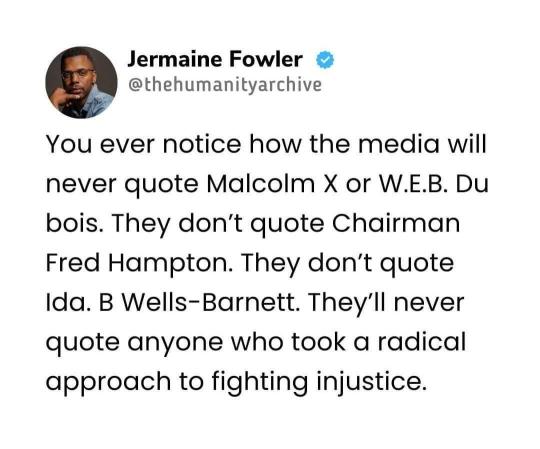
8 notes
·
View notes
Text

In 1903, one of America''''s most monumental literary works of African Americans "The Souls of Black Folks" was published by W.E.B Du Bois.
W.E.B. Du Bois was born on February 23, 1868, in Great Barrington, Massachusetts. Du Bois was a historian, civil rights activist, sociologist, author, editor, and Pan-Africanist. In 1909 he was also one of the founders of the National Association for the Advancement of Colored People (NAACP). On February 12, 1909, in response to a race riot in Springfield, Illinois, and the horrific acts that were being done against African Americans, a little over 50 white liberals and 7 African Americans met to discuss the racial crisis. Out of this meeting came the existence of the NAACP. Some of the African Americans in attendance were W. E. B. Du Bois, Ida B. Wells-Barnett and Mary Church Terrell. Among the white liberals at the meeting were Mary White Ovington and Oswald Garrison Villard, The organization continued the focus of the Niagara Movement which was the precursor to (NAACP).
6 notes
·
View notes
Text
A Black Philadelphia Reader: An exerpt
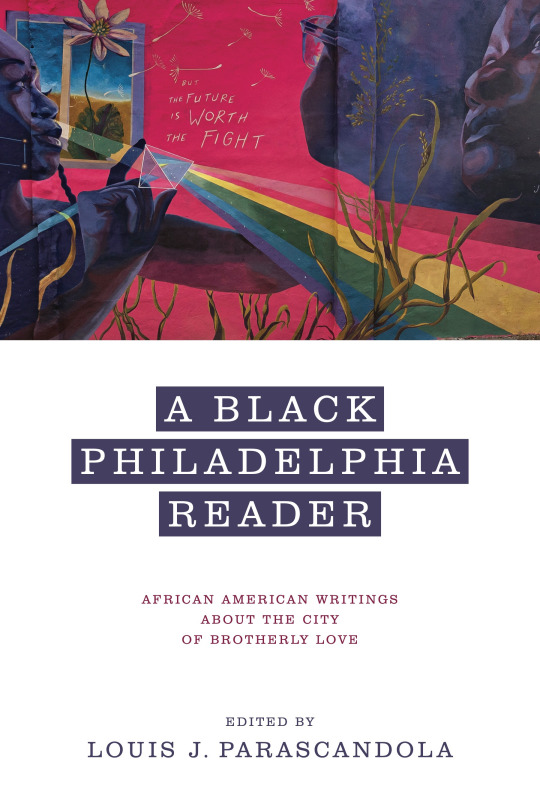
The common date given for the settlement of Philadelphia is 1682, when William Penn established a Quaker colony, providing it with a name that means “one who loves his brother.” Penn intended an idyllic “greene country towne,” one that was well ordered, with large open spaces within its twelve hundred acres. It “was the first major American town to be planned.” Penn envisioned his “towne” as a place of freedom, particularly in terms of religion. As with a certain amount of history, much of this is myth. The land, of course, had been settled by the Lenape Indians long before the Europeans arrived. Additionally, Penn’s “greene country towne” soon became a highly congested city, plagued by disease, crime, and fires. Its vaunted freedom was largely limited to White Protestants, and its “brotherly love” certainly did not extend to most immigrants, to non-Christians, or, in particular, to its Black residents.
Blacks have been at the center of Philadelphia’s history since before it was even known by that name. More than two thousand Blacks lived in the area once called New Sweden between 1638 and 1655. The fledgling colony encompassed parts of western Delaware and parts of Pennsylvania that now include Philadelphia. One of the most famous of these settlers was Antoni Swart (Black Anthony), a West Indian who arrived in the colony in 1639 aboard a Swedish vessel. Though initially enslaved, records indicate he eventually became free and was employed by Governor Johan Printz.
The history of Black Philadelphians has been one fraught with both great promise and shattered dreams from its beginnings until today. Philadelphia was, as historian Gary Nash observes, “created in an atmosphere of growing Negrophobia”; still, despite ongoing racial prejudice, “it continues to this day to be one of the vital urban locations of black Americans.” It is this paradoxical condition that is the most characteristic dynamic of the city’s relationship with its Black citizens. One facet of this relationship has been constant: whether African Americans have thrived here or suffered egregious oppression, they have never remained silent, never letting anyone else define their situation for them. They have always voiced their own opinions about their condition in their city through fiction, poetry, plays, essays, diaries, letters, or memoirs. The city has been blessed with a number of significant authors, ranging, among others, from Richard Allen to W. E. B. Du Bois to Jessie Fauset to Sonia Sanchez to John Edgar Wideman to Lorene Cary. In addition, there have been numerous lesser known but also forceful figures as well, including the enslaved people Alice and Cato, who were only known by those names. Whether they were native sons and daughters or spent significant time in the city or were there only long enough to experience the city in an impactful moment, Philadelphia has touched them all deeply. This anthology is a documentation of and a tribute to their collective voice. The focus here is not just on writers with a Philadelphia connection but on the authors’ views on the city itself. The hope is to provide a wide variety of Black perspectives on the city.
There is something special about what leading African American intellectual W. E. B. Du Bois once labeled “the Philadelphia Negro.” One reason for this uniqueness is the city’s relationship to its Black inhabitants, in part caused by their intertwined, virtually symbiotic, history. No other major Northern city in the country has had such a long connection with African Americans, one forged in the seventeenth century, and Blacks have never stopped coming. They first settled largely in what are now called the Old City and Center City, where some Blacks still live. They have since scattered throughout the city, sometimes by choice but often by necessity and force, today mostly residing in Northern and Western Philadelphia. Migration patterns have changed over the years, as in other cities, but the Black population in the city has rarely declined and has often increased in number. Philadelphia was, as of 2020, the sixth-largest metropolis in the nation, and Blacks make up more than 40 percent of the population there, more than the percentage of any of the other top ten cities in the country.
Philadelphia has a vibrant and culturally rich history, offering enormous promise to its inhabitants since its beginnings. It was founded with the premise of religious freedom and steeped in the radical independence movement that created this country. The city was settled by Quakers, perhaps the religious group that, in popular opinion if not always in fact, has most vociferously been associated with opposition to slavery. The “peculiar institution” was, in fact, almost nonexistent there by the early years of the nineteenth century. Philadelphia was the center of the Underground Railroad, with such legendary conductors as William Still. As the closest major city situated above the Mason-Dixon line, symbolically separating the North from the South, many fugitives from enslavement passed through Philadelphia. Some moved on, but a large number stayed, as the city seemed like the promised land for many African Americans. This is the powerful narrative of the city’s history that still holds true for numerous people today when they think of Philadelphia.
There is also something unique about the Black experience in this city. Blacks have had a nominal freedom throughout most of their existence in Philadelphia, yet when we look under the surface, Philadelphia’s treatment of African Americans has hardly been benign. The city has held out promises, but unfortunately many of these promises were not kept. Philadelphia may be situated in the North, but as Sonia Sanchez so eloquently writes in her poem “elegy (For MOVE and Philadelphia),” in many ways “philadelphia / [is] a disguised southern city.” There were Quakers, many of whom were abolitionists and worked for the Underground Railroad, but there were many others of the faith who were slaveholders, including the colony’s founder, William Penn. And even if the city was replete with abolitionists, it did not ensure that they viewed African Americans as equals. Blacks were, in fact, disfranchised from the vote in 1838, never to regain it until the ratification of the Fifteenth Amendment in 1870. Although the city was the center of the antislavery movement, not all of its White residents opposed slavery, and even if they did, the Fugitive Slave Acts of 1793 and 1850 hampered efforts to keep Blacks out of bondage. Before and after the Civil War, as demonstrated throughout this text, the city experienced a series of violent racial conflicts and has continue to practice an ugly pattern of segregation in housing, transportation, education, and employment, severely limiting the prospects of improvement for its Black citizens. There is a long history of racial injustice practiced by Philadelphia’s police as well as Black residents being ignored, at best, by the city government.
A Black Philadelphia Reader: African American Writings About the City of Brotherly Love is available for pre-order from Penn State University Press. Learn more and order the book here: https://www.psupress.org/books/titles/978-0-271-09731-2.html. Take 30% off with discount code NR24.
#Philadelphia#Philly#Pennsylvania#African American#African American History#PA History#Pennsylvania History#City of Brotherly Love#Black Writers#Black Authors#Black Writer#Black Author#W. E. B. Du Bois#Harriet Jacobs#Sonia Sanchez#John Edgar Wideman#Public Health#Housing#Policing#Criminal Justice#Public Transportation#Urban Studies
3 notes
·
View notes
Text
#ella josephine baker#ella baker#civil rights activist#human rights advocate#grassroots organizing#leadership philosophy#mentorship#student nonviolent coordinating committee (sncc)#w. e. b. du bois#thurgood marshall#a. philip randolph#martin luther king jr.#diane nash#stokely carmichael#bob moses#radical democracy#social justice#racial equality#gender equality#civil rights movement
5 notes
·
View notes
Photo
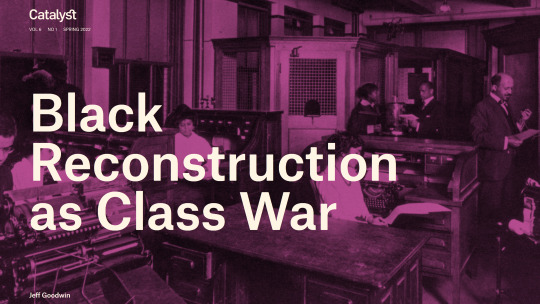
CATALYST JOURNAL
W. E. B. Du Bois’s Black Reconstruction in America, 1860–1880 is one of the greatest modern studies of revolution and counterrevolution. While it deserves its place alongside the classics, it is also an extraordinary example of a materialist and class analysis of race under capitalism. In recent years, the latter aspect of the book has been obscured and even denied. This essay seeks to restore Du Bois’s great work to its rightful place on both counts.
W. E. B. Du Bois’s magnum opus, Black Reconstruction in America, 1860–1880, published in 1935, is one of the greatest scholarly studies of revolution and counterrevolution.1 It deserves a place on one’s bookshelf next to other modern classics, including Leon Trotsky’s History of the Russian Revolution, C. L. R. James’s The Black Jacobins, Georges Lefebvre’s The Coming of the French Revolution, and Karl Marx’s Eighteenth Brumaire of Louis Bonaparte. Scholars of revolutions, unfortunately, have not usually considered the US Civil War to be one of the great social revolutions of the modern era, akin to the French, Russian, and Chinese revolutions. Many readers, in fact, view Du Bois’s book much more narrowly, as a response to white-supremacist histories of the Reconstruction era (1865–76) and, more particularly, a defense of the role of African American politicians — and the black voters who elected them — in the Southern state governments of that time. Du Bois does present such a defense, but Black Reconstruction offers much, much more than this.
Black Reconstruction is not only a towering work of history but also a work firmly embedded in the Marxist tradition. Du Bois reinterprets the Civil War as a social and political revolution “from below” — a workers’ revolution — that brought about the overthrow of both slavery and the Confederate state, thereby opening a door to interracial democracy in the South. The book then reinterprets the subsequent overthrow of this democracy as a class-based counterrevolution that destroyed the possibility of freedom for half the Southern working class and imposed a “dictatorship of capital” that brought about “an exploitation of labor unparalleled in modern times.”2
But why should one read Black Reconstruction in the twenty-first century? In short, because Du Bois is writing about issues that remain of tremendous political importance, including the nature of racial oppression and the racism of white workers. Unlike most contemporary analysts of race, moreover, Du Bois approaches these issues from the perspective of political economy. He rejects an approach to racial oppression that starts with prejudice, discrimination, or culture, trying instead to dig beneath these and understand how they are rooted in the material interests of different classes. Instead of insisting on the separation of race from class, as so many liberals do, Du Bois insists on their intimate connection.3
Black Reconstruction is rightly famous for stressing the collective agency of enslaved people in winning their own freedom and for its impassioned rebuttal of racist historiography. What has been less emphasized is the way in which Du Bois very explicitly rejects analyses of the Civil War and Reconstruction that emphasize race and racism as the primary drivers of historical events. Racism certainly played a hugely important role in that era, Du Bois argues, but it was a product of — and usually disguised — another, more powerful force: capitalism. More specifically, Du Bois argues in Black Reconstruction that two characteristic features of capitalism — capitalists’ competition for labor and workers’ competition for jobs — are the root cause of conflicts that seem to be driven by racism.
This perspective on Du Bois’s masterpiece runs counter to some influential interpretations of his work. Not surprisingly, there is resistance in some quarters to stating plainly that Black Reconstruction is a work of Marxism. Many people who come to Black Reconstruction for the first time are not expecting to read a Marxist text. They have most likely read Du Bois’s earlier collection of essays, The Souls of Black Folk, which precedes his turn to Marxism by three decades.4 While a number of authors do recognize Du Bois’s Marxism,5 many others deny that Black Reconstruction or his subsequent writings are Marxist. In 1983, for example, Cedric Robinson described Du Bois as a “sympathetic critic of Marxism.”6 Gerald Horne’s 1986 book examines in great detail Du Bois’s involvement in leftist (mainly Communist) causes after World War II, but he never offers an opinion as to whether Du Bois was a Marxist.7 And Manning Marable’s book on Du Bois, published just a few months later, portrays him as a “radical democrat” — although Marable later suggested that Du Bois might usefully be viewed as part of the “Western Marxist” tradition.8
More recently, a group of “Du Boisian” sociologists recognizes that Du Bois integrates some elements of Marxist thinking into his worldview. But according to these writers, not only is Du Bois not a Marxist but his ideas clearly transcend Marx’s. Marx gave theoretical primacy to class, they say, whereas Du Bois grasped the “intersectionality” of class and race, emphasizing their connections while giving theoretical primacy, by implication, to neither.9 According to these writers, this theoretical move allowed Du Bois, unlike Marx and his followers, they claim, to understand colonialism, the ways in which race “fractures” class consciousness, and racial oppression generally.10
In this essay, I argue that these “Du Boisians” and others who deny Du Bois’s Marxism are wrong. Du Bois actually does give theoretical primacy to capitalism. In both Black Reconstruction and his subsequent writings, Du Bois repeatedly emphasizes how racial oppression is a product of capitalism. Time and again, furthermore, Du Bois takes issue with what we would today call “race reductionism,” that is, attempts to explain historical events primarily in terms of race. His rejection of race reductionism only deepened in the years after Black Reconstruction’s publication.
After 1935, in short, “Du Boisianism” is Marxism. Du Bois’s failure lay not in the fact that he embraced a Marxist orientation but that he came to uncritically support Soviet authoritarianism. This was perhaps the greatest tragedy, in my view, of Du Bois’s long life. But the main point of this essay is to show that, despite all efforts to ignore or deny his Marxism, Black Reconstruction stands as a brilliant work of class analysis.
BLACK RECONSTRUCTION IN AMERICA
Du Bois’s turn toward Marxism occurred rather late in his life, shortly before the publication of Black Reconstruction. His trip to the Soviet Union in 1926, months before Joseph Stalin’s consolidation of power, certainly pushed him in this direction. “Never before in life,” writes his biographer David Levering Lewis, “had he been as stirred as he would be by two months in Russia.”11 Du Bois traveled more than two thousand miles across the Soviet Union, “finding everywhere … signs of a new egalitarian social order that until then he had only dreamt might be possible.”12 “I may be partially deceived and half-informed,” Du Bois wrote at the time. “But if what I have seen with my own eyes and heard with my ears in Russia is Bolshevism, I am a Bolshevik.”13 (Du Bois would visit the Soviet Union again in 1936, 1949, and 1958.)
Du Bois later wrote that his trip to the Soviet Union led him to question “our American Negro belief that the right to vote would give us work and decent wage,” or would abolish illiteracy or “decrease our sickness and crime.”14 Only a revolution, by implication, could attain these ends. Du Bois also now believed that “letting a few of our capitalists share with whites in the exploitation of our masses, would never be a solution of our problem.”15 Black liberation was impossible, in sum, so long as the United States remained a capitalist society, and “black capitalism” was a dead end.
Du Bois had been broadly familiar with Marxist ideas since his graduate student days at Harvard and in Berlin. But it was not until 1933, in the midst of the greatest crisis of capitalism in world history, that Du Bois began conscientiously to study Marx, Friedrich Engels, and Vladimir Lenin. He was then sixty-five years old. As Lewis writes, Du Bois fell hard for Marxist analysis:
Like so many intellectuals in the thirties who broadcast Marxism as a verifiable science of society, the Atlanta professor was mesmerized by dialectical materialism. Calling Marx the “greatest figure in the science of modern industry,” Du Bois seemed to rediscover with the avidity of a gifted graduate student the thinker who Frank Taussing, his Harvard economics professor, had smugly ignored. Marx made history make sense — or more sense, Du Bois came to believe, than all other analytical systems.16
Du Bois was prodded to master Marxist theory by the rise of a group of so-called Young Turks within the National Association for the Advancement of Colored People (NAACP), the civil rights organization he helped found. These young scholar-activists, including Abram Harris, Ralph Bunche, and E. Franklin Frazier (all members or soon-to-be members of the Howard University faculty) “were attempting to shift the Negro intelligentsia’s focus on race to an analysis of the economics of class.”17 All were convinced that a powerful interracial labor movement was necessary to smash racial oppression, and they were critical of the NAACP for its lack of an economic program. Members of this group would offer advice to Du Bois about which texts were essential for him to read. Harris’s book, The Black Worker: The Negro and the Labor Movement, coauthored with Sterling Spero, proved particularly influential; it was no coincidence that Du Bois titled the first chapter of Black Reconstruction “The Black Worker.”18 (I discuss the precise significance of this below.)
(Continue Reading)
#politics#the left#w. e. b. du bois#race#class#capitalism#racism#black history#black history month#history#marxism#socialism#democratic socialism#catalyst#catalyst journal
22 notes
·
View notes
Quote
What is Africa to me? Once I should have answered the question simply: I should have said 'fatherland' or perhaps better 'motherland' because I was born in the century when walls of race were clear and straight; when the world consisted of mutually exclusive races; and even though the edges might be blurred, there was no question of exact definition and understanding of the meaning of the word. […] Since then the concept of race has so changed and presented so much of contradiction that as I face Africa I ask myself: what is it between us that constitutes a tie which I can feel better than I can explain? Africa is, of course, my fatherland. Yet neither my father nor my father's father ever saw Africa or knew its meaning or cared overmuch for it. My mother's folk were closer and yet their direct connection, in culture and race, became tenuous; still, my tie to Africa is strong. On this vast continent were born and lived a large portion of my direct ancestors going back a thousand years or more. The mark of their heritage is upon me in color and hair. These are obvious things, but of little meaning in themselves; only important as they stand for real and more subtle differences from other men. Whether they do or not, I do not know nor does science know today. But one thing is sure and that is the fact that since the fifteenth century these ancestors of mine and their other descendants have had a common history; have suffered a common disaster and have one long memory. The actual ties of heritage between the individuals of this group, vary with the ancestors that they have in common and many others: Europeans and Semites, perhaps Mongolians, certainly American Indians. But the physical bond is least and the badge of color relatively unimportant save as a badge; the real essence of this kinship is its social heritage of slavery; the discrimination and insult; and this heritage binds together not simply the children of Africa, but extends through yellow Asia and into the South Seas. It is this unity that draws me to Africa.
W. E. B. Du Bois, Dusk of Dawn: An Essay Toward an Autobiography of a Race Concept (1940)
17 notes
·
View notes
Text
#black history#voting#vote or die#william c. anderson#william c anderson#lucy parsons#w. e. b. du bois#kwame ture#black radical tradition#bill clinton#liberalism#democracy#neoliberal democracy#voting is not harm reduction
1 note
·
View note
Text

The Souls of Black Folk by W. E. B. Du Bois
Aquarius: "Piggies"
4 notes
·
View notes
